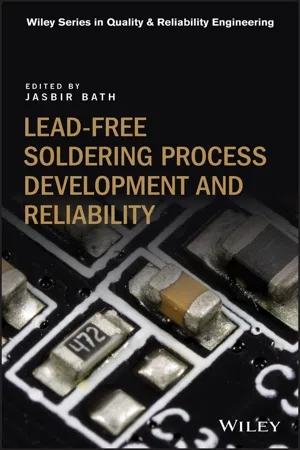
Lead-free Soldering Process Development and Reliability
Jasbir Bath, Jasbir Bath
- English
- ePUB (disponibile sull'app)
- Disponibile su iOS e Android
Lead-free Soldering Process Development and Reliability
Jasbir Bath, Jasbir Bath
Informazioni sul libro
Covering the majortopics in lead-free soldering
Lead-free Soldering Process Development and Reliability provides a comprehensive discussion of all modern topics in lead-free soldering. Perfect forprocess, quality, failure analysisand reliability engineersin production industries, this reference will help practitioners address issues inresearch, development andproduction.
Among other topics, the book addresses:
· Developments in process engineering(SMT, Wave, Rework, Paste Technology)
· Lowtemperature, hightemperature andhighreliabilityalloys
· Intermetallic compounds
· PCB surface finishesandlaminates
· Underfills, encapsulants and conformal coatings
· Reliability assessments
In a regulatory environment that includes the adoption of mandatory lead-free requirements in a variety of countries, the book'sexplanations ofhigh-temperature, low-temperature, andhigh-reliabilitylead-free alloysin terms of process and reliability implicationsare invaluable to working engineers.
Lead-free Soldering takes a forward-looking approach, with an eye towards developments likely to impact the industryin the comingyears. These will include the introduction of lead-free requirementsin high-reliability electronics products in themedical, automotive, and defense industries.The book provides practitioners in theseand other segments of theindustrywith guidelinesand informationtohelpcomplywith these requirements.
Domande frequenti
Informazioni
1
Lead‐Free Surface Mount Technology
1.1 Introduction
1.2 Lead‐Free Solder Paste Alloys
1.3 Solder Paste Printing
1.3.1 Introduction
1.3.2 Key Paste Printing Elements
- PCB support
- Squeegee (type, speed, pressure, angle)
- Stencil (thickness, aperture, cleanliness, snap off, separation speed)
- Solder paste (including type, viscosity)